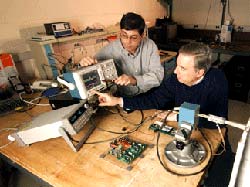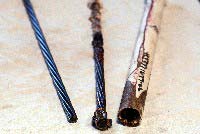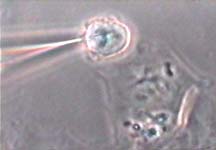This special field revolves around processes for modifying material properties (milling, cooling), composition (filtration, distillation) and type (oxidation, hydration).
Valuable information is available on a broad range of technologies including material separation, laser processes, measuring techniques and robot engineering in addition to testing methods and coating and materials analysis processes.

Researchers are testing the feasibility of using radar technology to detect mold behind gypsum wallboard. A common problem, hidden mold can cause serious structural damage and health problems before homeowners discover it.
Hoping to develop a non-destructive and less expensive method than is now available to detect mold behind walls, Georgia Tech Research Institute (GTRI) scientists are collaborating with humidity control expert Lew Harriman of Mason-Grant Consulting in a two-year feasibili

A Penn State study has shown that there are U.S. oils that can match or exceed the characteristics of the European leader for temporary corrosion protection of concrete bridge tendons.
Dr. Andrea Schokker, the Henderson professor of civil engineering, who led the project, says, “The North American post-tensioning industry was considering importing the European product, possibly at higher cost than the oils available in the U.S. market. Our study established that there are adequate products

Researchers at the Department of Energy’s Oak Ridge National Laboratory have developed a nanoscale technology for investigating biomolecular processes in single living cells. The new technology enables researchers to monitor and study cellular signaling networks, including the first observation of programmed cell death in a single live cell.
The “nanobiosensor” allows scientists to physically probe inside a living cell without destroying it. As scientists adopt a systems approach to st

The same stuff that stains your coffee mug could reduce pollution in the computer hard-drive industry, while saving drive makers millions of dollars in manufacturing costs.
The compound is derived from the tannin phytochemicals commonly found in plants. Green tea has a lot of them.
John Lombardi, president of Tucson-based Ventana Research Corp. combined phytochemicals from green-tea extract, synthetic proteins and an abrasive to produce a lapping slurry that is three to four times f

Possible uses include biological labeling, laser light, catalysts, memory storage, and relief for physicists
A wish list for nanotechnologists might consist of a simple, inexpensive means – actually, any means at all – of self-assembling nanocrystals into robust orderly arrangements, like soup cans on a shelf or bricks in a wall, each separated from the next by an insulating layer of silicon dioxide.
The silica casing could be linked to compatible semiconductor devices. The

Moscow scientists have managed to do simply and inexpensively something which normally proves complicated and expensive. The concept thought out and then implemented is a device which allows you to check the quality of ground and polished surfaces with unprecedented precision and rapidity and to detect every single defect of such surfaces. The effort has been funded by both the Russian Foundation for Basic Research and the Foundation for Promotion of Small-Size Enterprises in Research and Technical A